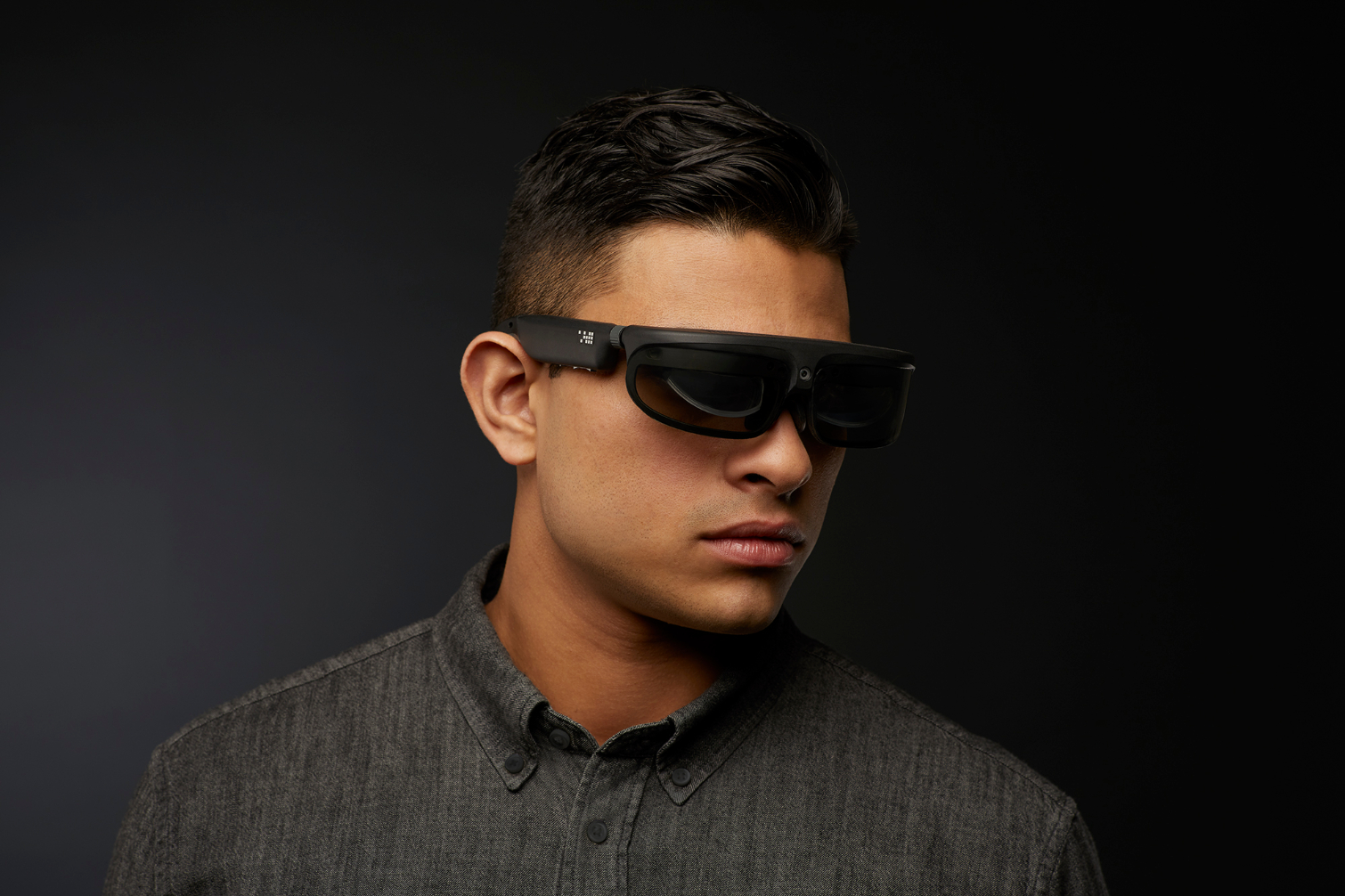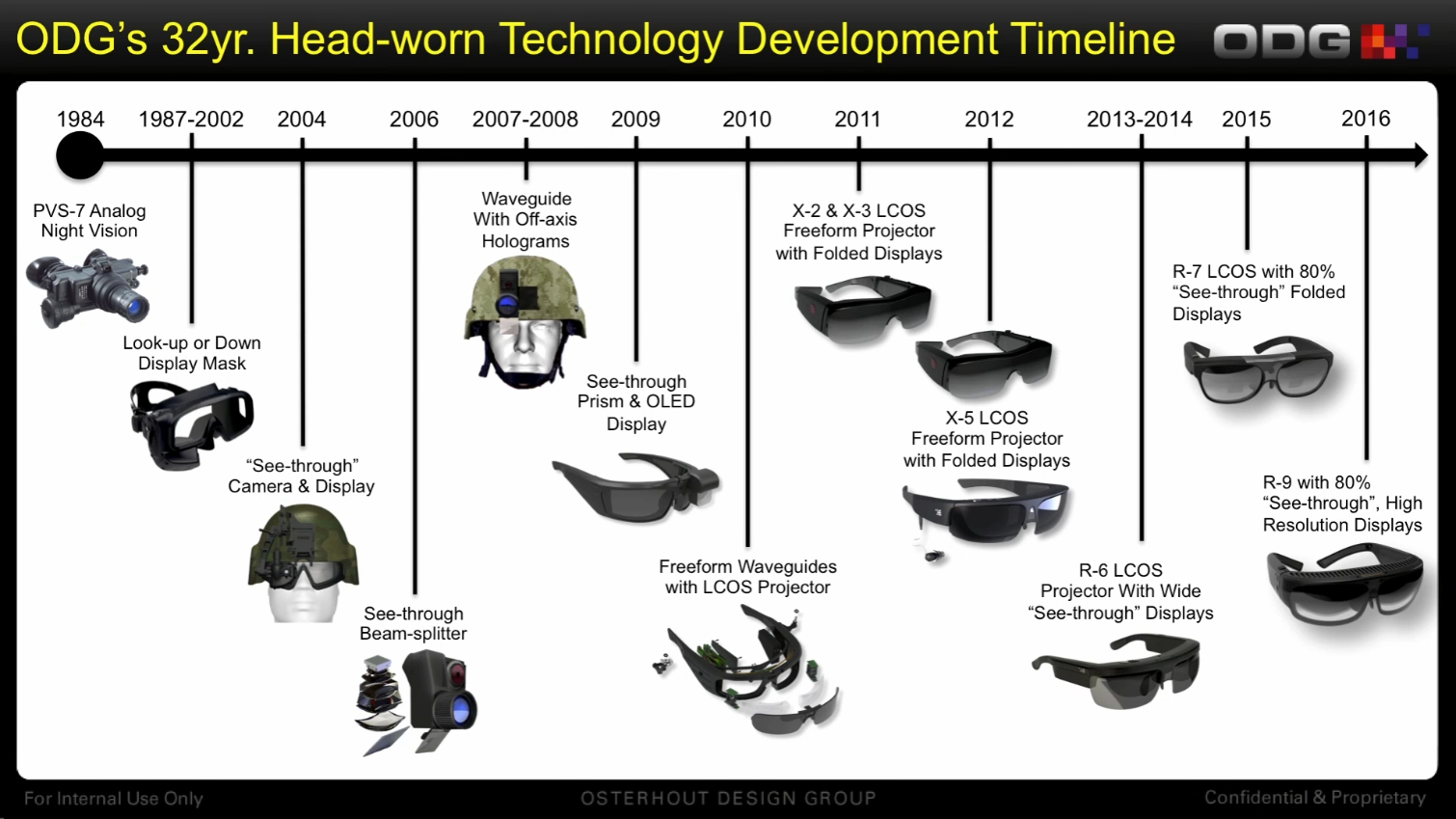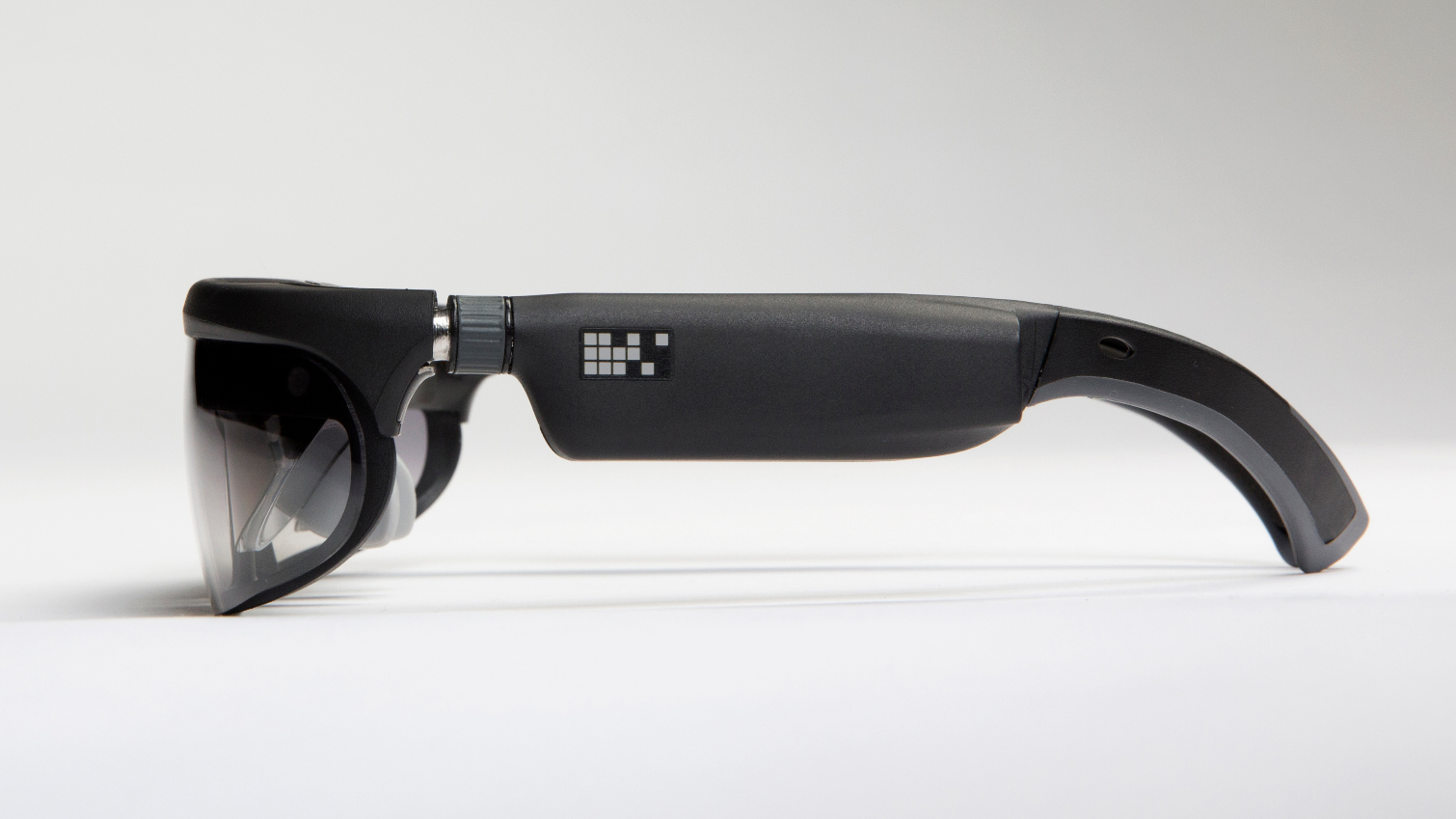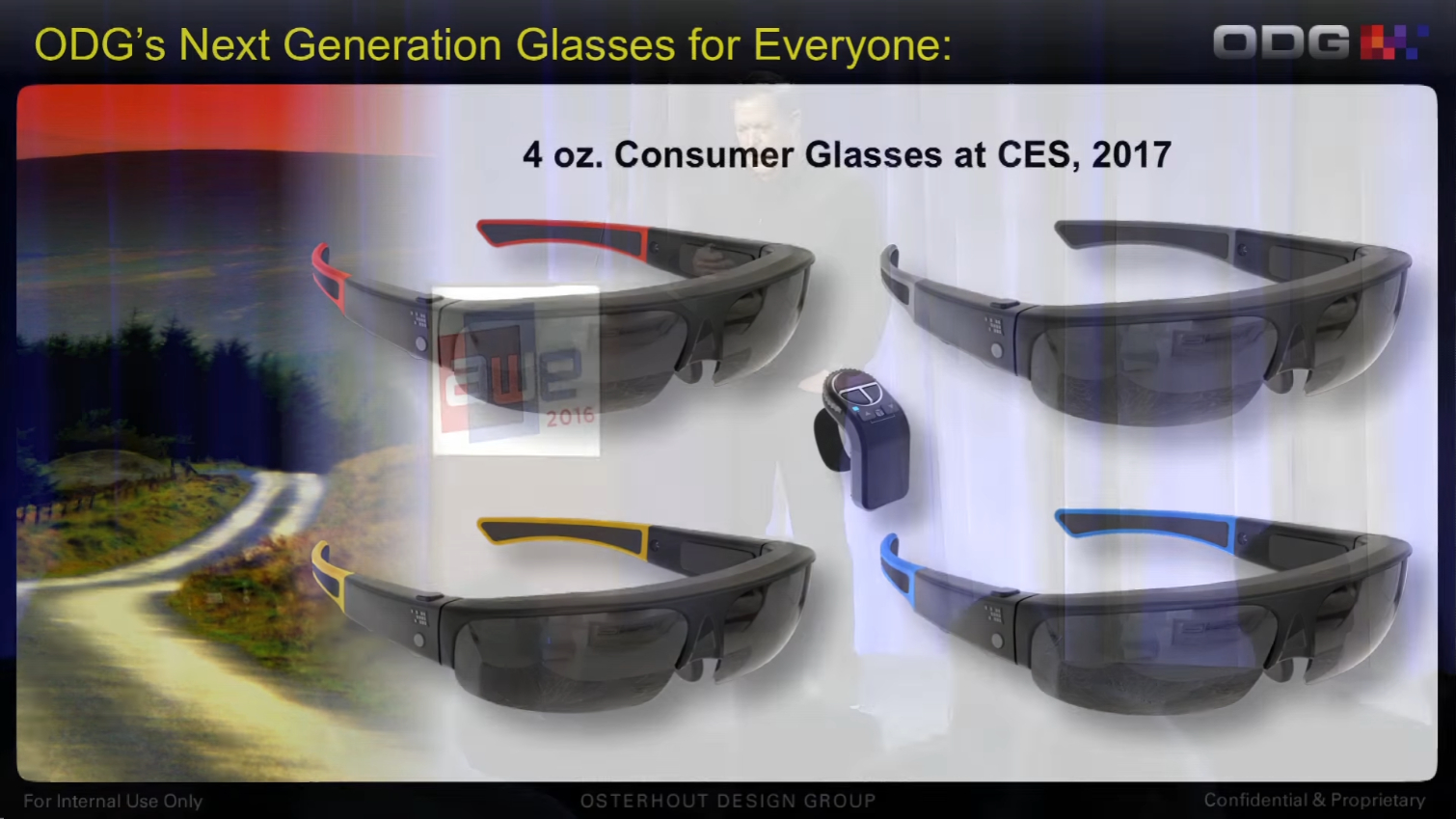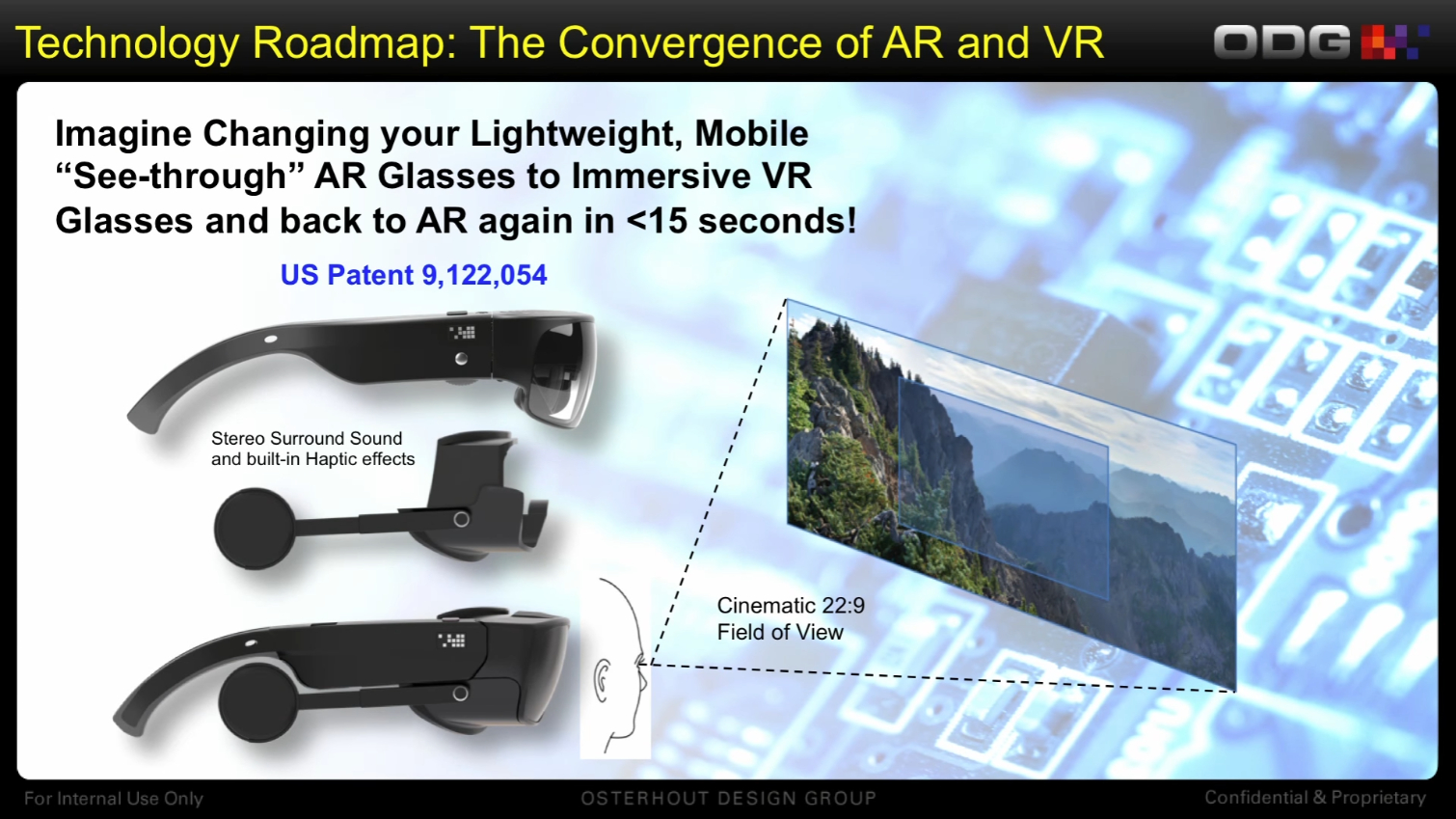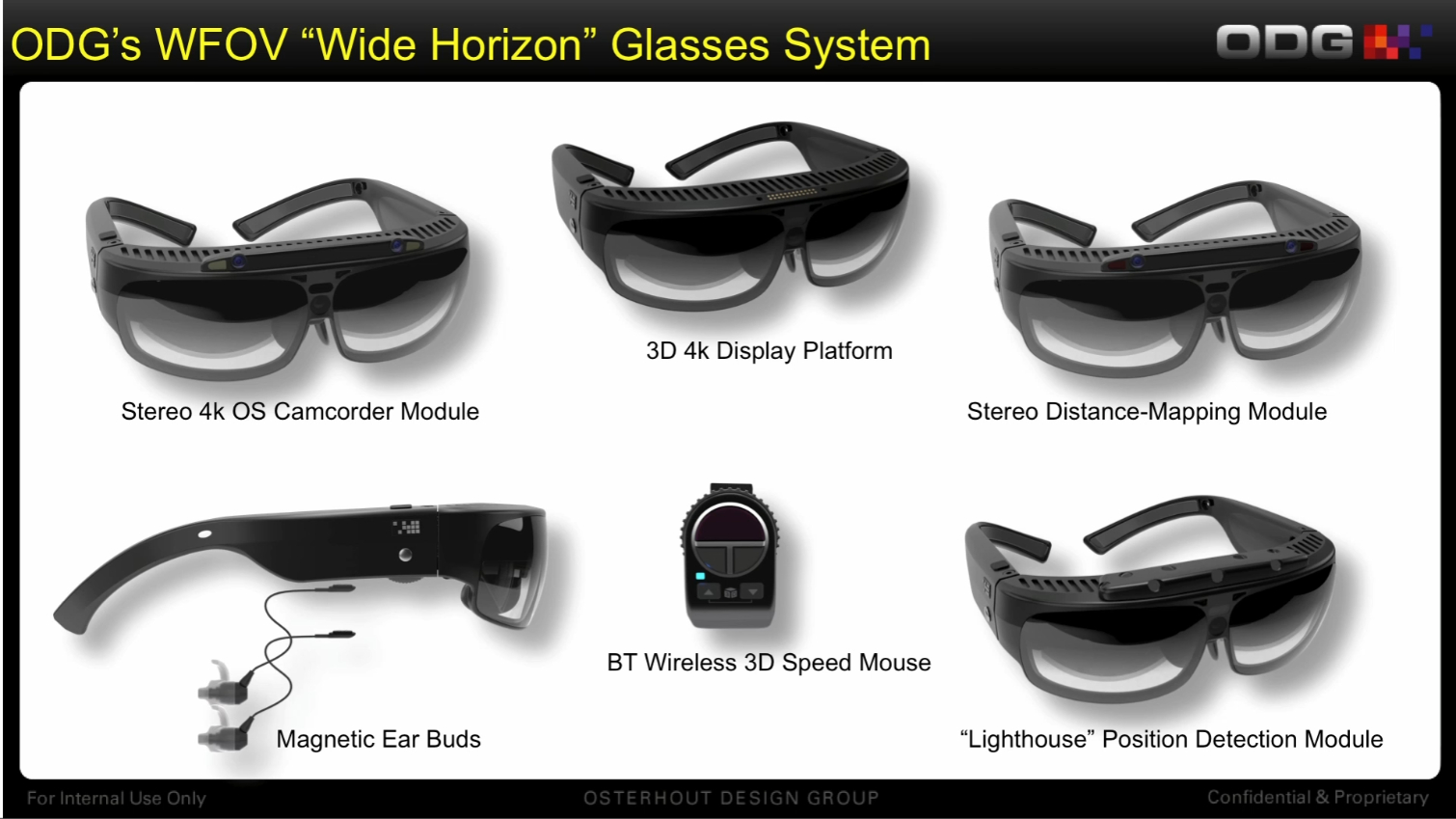ODG Introduces Consumer AR Device That Looks Like Sunglasses
Osterhout Design Group (ODG) revealed its eighth and ninth generation augmented reality (AR) glasses during CES 2017. For the first time, ODG has a consumer facing product to show, and it’s kind of a big deal.
If you’re not familiar with ODG, you’re probably not alone, but Osterhout Design Group is far from a new company, and the founder of ODG is a 32-year veteran of the AR industry. Ralph Osterhout started making night vision goggles for the military as early as 1984 and he continued building innovative AR-precursor devices for over three decades. In 1999, Osterhout founded ODG, which today supplies AR glasses to the medical, industrial, and shipping industries. With ODG’s latest product, the R-8 Smartglasses, the company intends to bring its expertise to the consumer market.
The launch of ODG’s R-8 Smartglasses didn’t come as a surprise. In fact, Osterhout said they were coming during Augmented World Expo 2016 in June. The executive took to the stage to deliver the opening keynote speech at AWE, in which he outlined what we could expect on the horizon. Osterhout spent 20 minutes describing some of the current users of ODG AR Smartglasses, such as industrial repair workers, and warehouse order pickers. He also highlighted the potential for AR entertainment. At the end of his presentation, Osterhout said “Guess what! Hold on to your hat. You’re six months away from the consumer model.”
Osterhout kept his promise—kind of. ODG is at CES showing off the R-8 consumer Smartglasses alongside the company’s latest industrial model, the R-9 Smartglasses. Though the company does have the hardware on display and ready to demo, the product won’t reach customers until the second half of 2017.
“ODG smartglasses are already in use and set the standard in industries across the entire spectrum of business. Our commitment to our commercial customers remains unchanged, but we are starting to see the pull of the early adopter phase for consumer smartglasses as VR and AR emerge as new computing platforms, form factors improve and people want more out of their mobile devices,” said Pete Jameson, COO of ODG. “We are excited to begin engaging developers and introduce compelling consumer experiences to seed adoption.”
During the keynote at AWE, Osterhout told a utopian tale of self-contained AR smartglasses that look like a pair of sunglasses. Surprisingly, the final design isn’t far off from that idea. The R-8 glasses are somewhat bulkier than a standard pair of sunglasses, but not by a lot. Somehow, ODG managed to cram the processing power, memory, wireless radios, and battery pack into a tiny package that weighs less than 4.5 ounces.
ODG’s R-8 and R-9 Smartglasses are the first devices to feature Qualcomm’s latest mobile SoC, the Snapdragon 835. ODG also leveraged Qualcomm’s Snapdragon VR SDK to take advantage of the SoC’s advanced AR processing features.
Get Tom's Hardware's best news and in-depth reviews, straight to your inbox.
"The premium Snapdragon 835 processor was designed from the ground-up to support new and innovative products and experiences beyond mobile phones, and it's great to see that the first announced Snapdragon 835 devices will be ODG's smartglasses," said Raj Talluri, senior vice president, product management, Qualcomm Technologies, Inc. "Thermal dissipation on a heavy compute but small device is very difficult so higher power efficiency is a must. The Snapdragon 835 processor, with our unique SoC design expertise on a 10nm process node, enables ODG to meet their design goals and develop lighter, smaller and sleeker smartglasses that take advantage of the new processor's superior performance and power efficiency."
The industrial-class R-9 Smartglasses feature a 50-degree FOV, which doesn’t sound very compelling, but Osterhout explained that with the screens right in front of your eyes, instead of a few inches away like in a VR headset, you don’t need as wide a FOV. We’ll wait until we try it ourselves before agreeing with him. The R-8 Smarglasses offer an even smaller field of view of “greater than 40-degrees."
ODG’s new Smartglasses are meant for augmented reality, but you can also run mixed reality and virtual reality experiences on the glasses. During the AWE 2016 presenation, Osterhout talked about a magnetic cover that you can place over the lenses to block out the real world and run VR applications. The executive also talked about a line of accessories that would add functionality to the smartglasses. One of the accessories that Osterhout highlighted included Lighthouse tracking sensors, but ODG didn’t discuss the accessory lineup during CES 2017.
“ODG is keeping up a rapid pace of innovation, taking lessons learned over many decades building smartglasses and using them to develop and refine our technology to produce glasses that are optimized for many users – including heavy and light enterprise, professionals and consumers,” said Ralph Osterhout, Founder and CEO of ODG. “ODG is pioneering glasses for the masses that play movies with cinematic clarity, drop you inside immersive 3D interactive experiences, and reveal new worlds of invention and productivity. This is so much bigger than just a device, it’s about a whole new computing medium that will transform how we interact with and discover information and engage with people and objects in the world around us.”
The R-8 Smartglasses may not be Lighthouse compatible (yet), but the device does offer 6-degree of freedom motion tracking via hardware accelerated, visual inertial odometry-based tracking, which is one of the advanced features unlocked through the Snapdragon VR SDK.
ODG’s R-8 consumer Smartglasses will go on sale in the second half of 2017 and retail for under $1000. The R-9 industrial Smartglasses are set to ship in the second quarter of this year and ODG said they'll sell for $1799.
Kevin Carbotte is a contributing writer for Tom's Hardware who primarily covers VR and AR hardware. He has been writing for us for more than four years.
